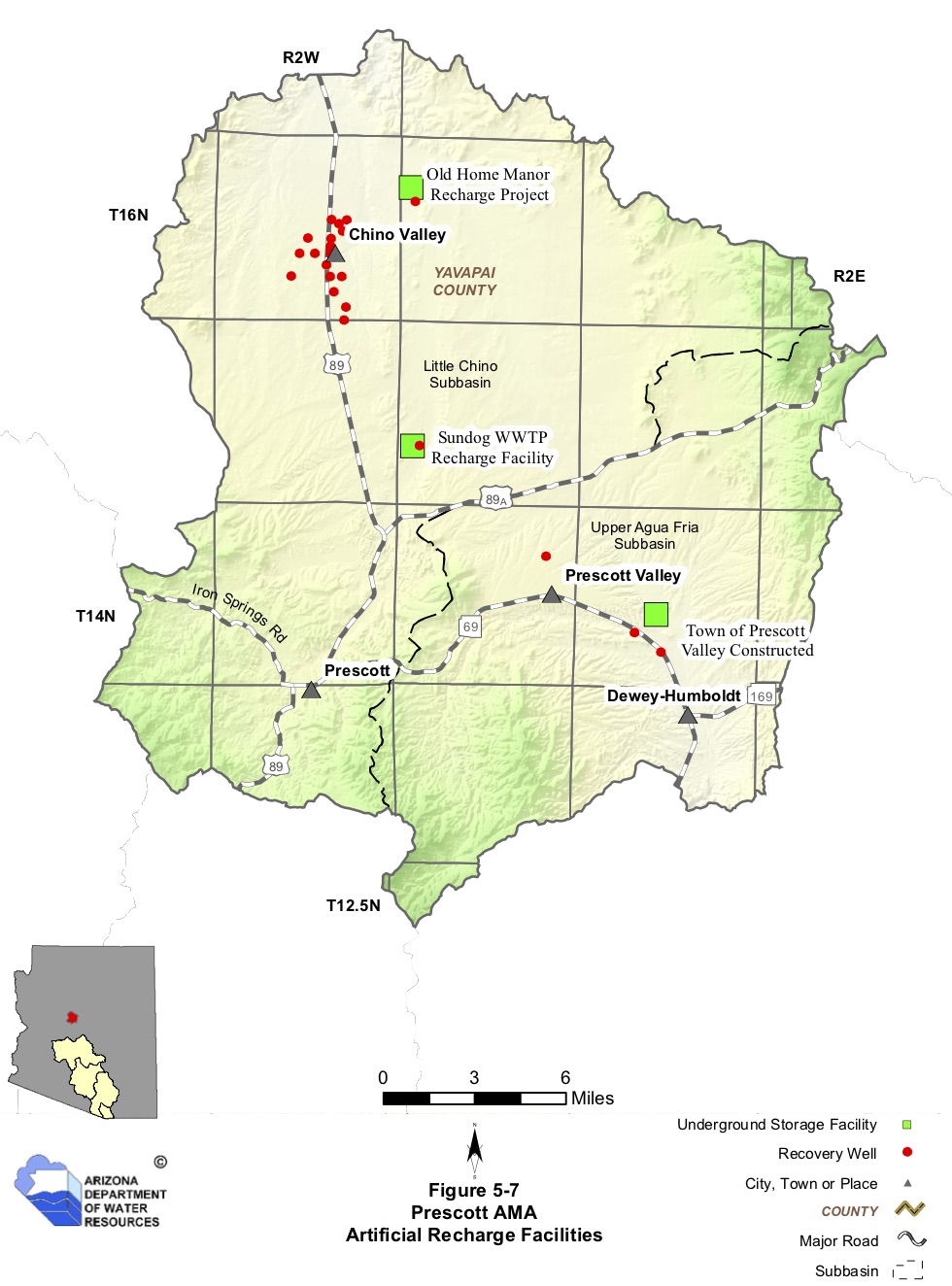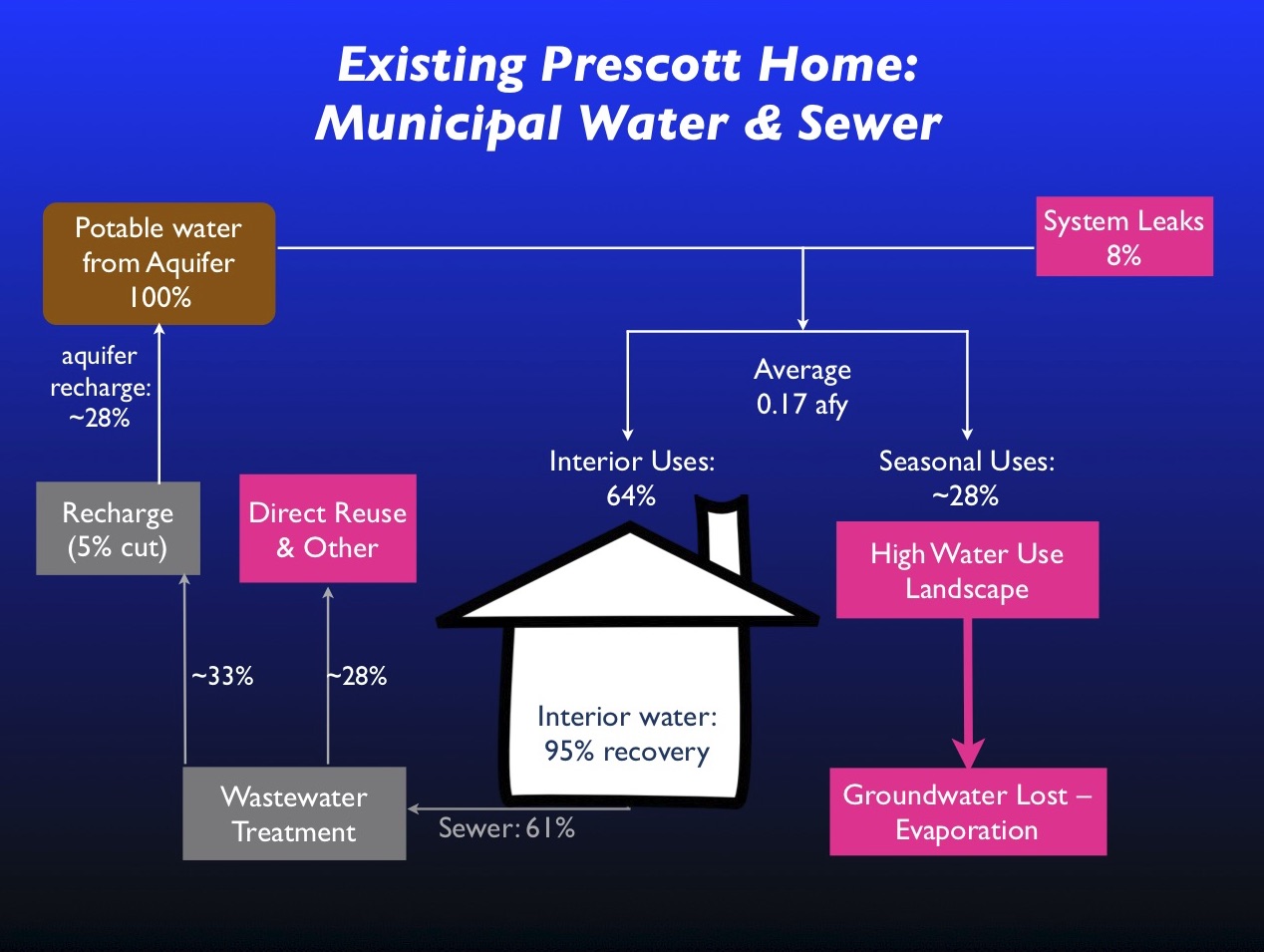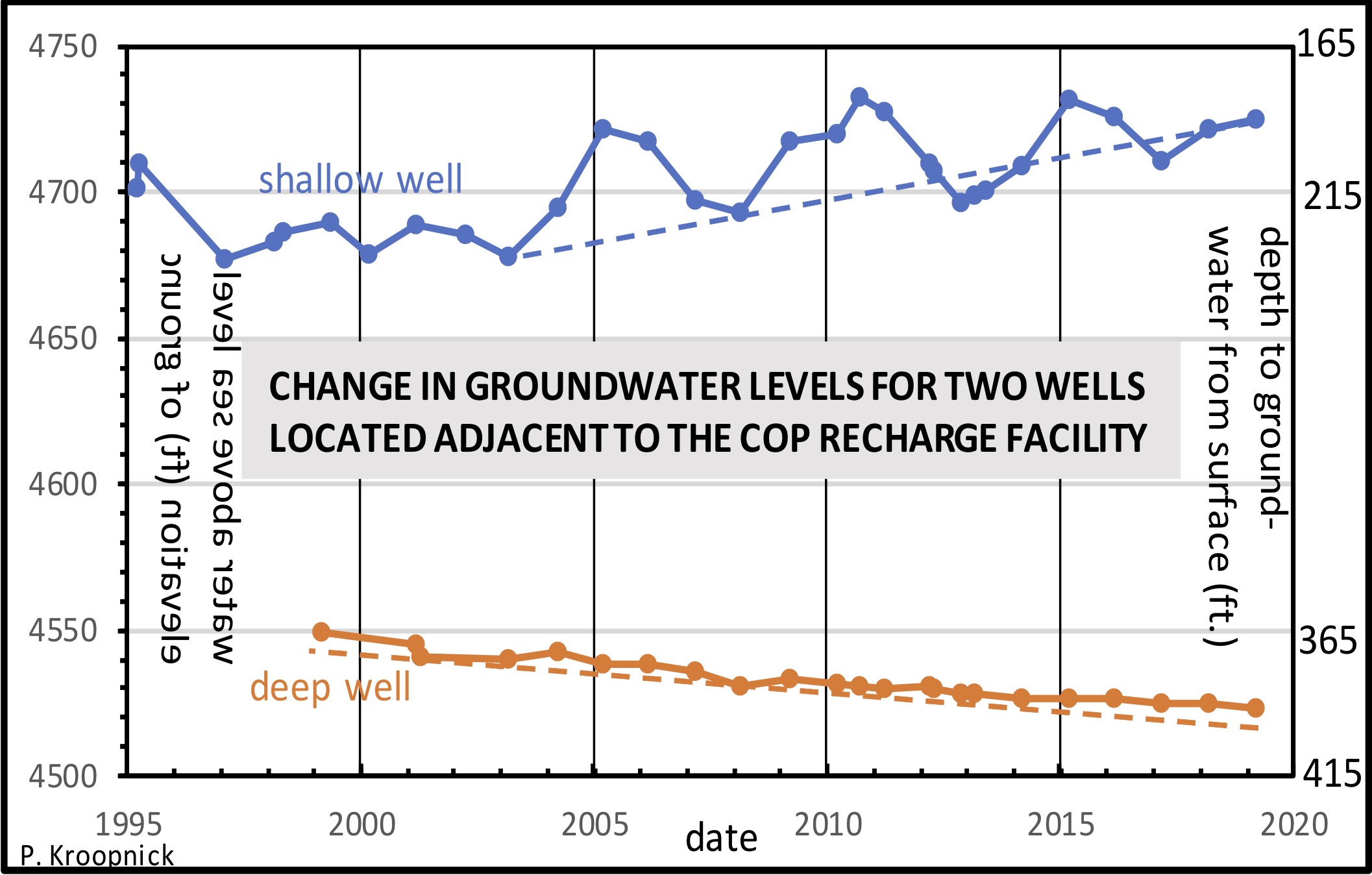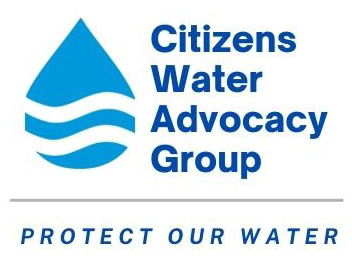Recharge is inadequate.
Aquifer recharge sounds like a wonderful method to reduce the stress on our groundwater supply. ADWR strongly encourages it. Prescott and Prescott Valley are very proud of their recharge efforts. But there is much more to this story because:
- Most artificial recharge does not help the aquifer. ADWR allows municipalities to pump additional groundwater in support of development equivalent to the quantity recharged. Only the relatively small amount recharge designated as “permanent” helps the aquifer.
- Even if all the artificial recharge were to be committed as permanent, the amount of artificial recharge is insufficient to offset the quantity of groundwater pumped.
- Between 20% and 70% of the groundwater pumped is lost to evaporation and cannot be captured for recharge.
-
Artificial Recharge Locations
Artificial Recharge Locations
On the map, artificial recharge locations are green rectangles.

-
Artificial Recharge Credits
Artificial Recharge Credits
Aquifer Recharge Credits Don't Help the Aquifer
ADWR awards artificial recharge credits to the cities for their artificial recharge. These recharge credits permit increased groundwater pumping to supply new development.
Due to the recharge credit system, artificial recharge does not restore the aquifer. Artificial recharge does not eliminate the harmful decline in our water resources indicated by a growing overdraft.
Due to the requirements of the Reasonable Growth Initiative (Prop 400), Prescott dedicates a small amount of recharge (about 1% of total recharge in 2019) to the aquifer as permanent recharge. Prop 400, added to the Prescott City Charter by voter initiative in 2005, requires several critical actions in order for the Council to approve an annexation exceeding 250 acres. The Council must provide an economic impact analysis, receive public comment, dedicate all effluent to permanent recharge, and approve the annexation by a supermajority (3/4 of council) vote. This requires that all wastewater collected from the annexed service area would be cleaned, permanently recharged, and could not be recovered to support additional development. This requirement tends to reduce the future growth of the overdraft.
Updated December 6, 2020
-
Recharge Quantity Insufficient
Recharge Quantity Insufficient
New Homes Use More Than Recharge Quantity
To understand how water is used in the home and where losses come from, the chart below has been prepared. It follows the flow from the aquifer to the home, through the home, and on to the wastewater treatment plant.
The amount of groundwater needed to supply the home will always be greater than the quantity of treated wastewater that can be recovered and artificially recharged. Ideally, with proper design, efficient appliances and fixtures, and no landscape water use, the loss to the aquifer would be only 20%. In practice, in Prescott the loss is currently over 70%!
To understand how these losses are calculated, consider how water flows through an average single family home in Prescott.

For an existing average home, about 8% of the groundwater pumped is lost in leaks before it reaches the home water meter. Next, in an average year, an average Prescott homeowner uses 28% of the total amount of groundwater pumped for outside uses, mainly irrigating landscape plants and lawns. All of this water is lost to evaporation. Thus a total of 36% of the groundwater pumped is lost and cannot be recovered.
The remaining 64% of groundwater pumped is used inside the home. Ninety-five percent of the water entering the home is recovered in the sewer system. As a result, only 61% (95% of 64%) of the groundwater pumped is sent to the wastewater treatment plant to be cleaned.
In Prescott, a large portion of the treated wastewater (28% of groundwater pumped) is used to water golf courses (direct reuse). The remaining 33% is sent to recharge ponds near the airport. After evaporation at the recharge ponds, we estimate that only 28% of the groundwater pumped is recharged into the aquifer.
Even if outside landscape water use could be eliminated, if no treated water were to be sent to golf courses, and if all recharge was designated as permanent recharge, the losses to the aquifer would still be about 20% of the groundwater pumped to meet the home's requirements. New approaches are needed to design developments that can offset this 20% loss so that developments are water neutral, meaning net-zero impact on the aquifer.
-
Geologic Structure Retards Groundwater Movement
Geologic Structure Retards Groundwater Movement
Restricted Groundwater Flow
Artificially recharged water does not flow easily or quickly through the aquifer to the wells pumping groundwater.
The hydrograph below shows water levels near Prescott’s recharge ponds. The blue line shows that water levels are increasing in a shallow well. This indicates that water from the recharge ponds is percolating into the upper alluvial aquifer. However, the water levels (orange line) in an adjacent deep well tapping the lower volcanic aquifer are declining. The lower volcanic aquifer is the primary water supply for the Prescott AMA. The groundwater level declines are due to groundwater pumping, mainly by Prescott and Prescott Valley.
However, the water levels (orange line) in an adjacent deep well tapping the lower volcanic aquifer are declining. The lower volcanic aquifer is the primary water supply for the Prescott AMA. The groundwater level declines are due to groundwater pumping, mainly by Prescott and Prescott Valley. The data indicate that recharged water reaches the upper alluvial aquifer but does not reach the lower volcanic aquifer quickly enough, and with adequate quantity, to offset the decline in the lower volcanic aquifer. ADWR modeling suggests that the upper and lower aquifers are separated by a layer of fine grained material that restricts, but does not completely block, groundwater movement between the upper and lower units.
Updated October 14, 2020
